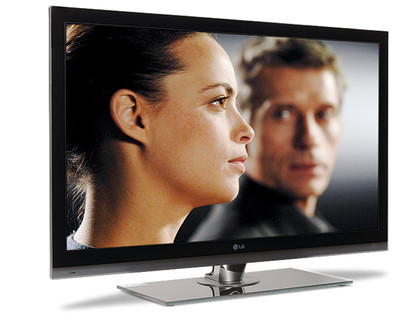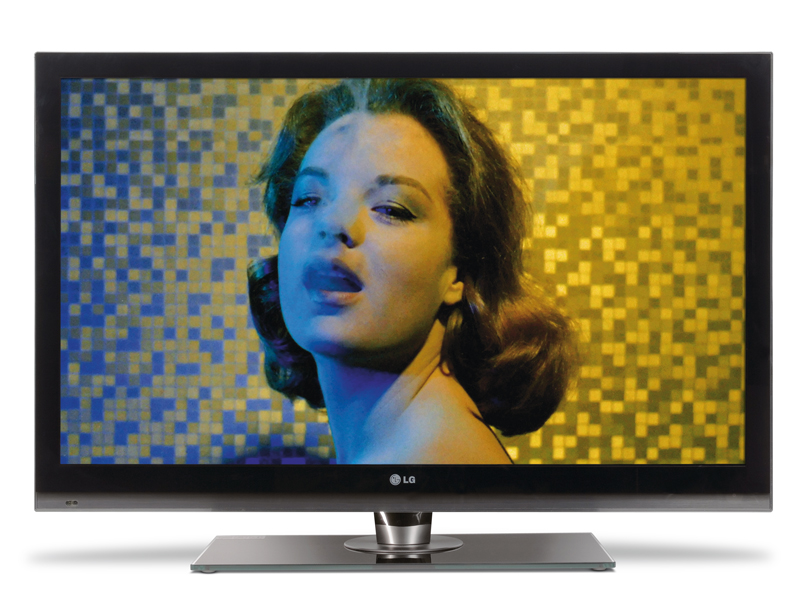Why you can trust TechRadar

The sternest test of a display can often be how well it copes with the humbler stuff, and the lowest common denominator in the video department is standard-definition Freeview.
While clearly not the most nourishing diet for a set such as this, digital terrestrial broadcasts polish up rather nicely.
Whereas many thoroughbred sets seem to regard this sort of thing as beneath them, the LG is able to unearth its (limited) strengths and iron out many of the weaknesses.
Detail, for a start, is not bad at all. The pictures are neatly scaled and fore and background information is picked out carefully.
SD Freeview quality
Edge discipline is also good; all too often bog-standard broadcasts are a shaky, mottled mess, with all manner of ghosting, blocking and edge-noise, but the 42SL9000 manages to keep most of that in check when delivering solid, well-ordered images that, watched from a sensible distance, are clean and easy on the eye.
And, while there's clearly a lot going on to make them this way, the images never have that strained, overcooked look that indicates processing systems working at the very limits of their abilities.
Sign up for breaking news, reviews, opinion, top tech deals, and more.
Colours are accurate, with everything from the drab, real-world tones of daytime programming, the garish hues of children's television and everything in between handled with equal dexterity.
Mass-produced studio-bound fare, such as the Jeremy Kyle Show, often look nasty, with the harsh lighting combining with the modest production values to hideous effect.
Here, though, the worst excesses are kept in check and the skin-tones on display, so often rendered as a kind of mottled, tapioca sludge, look at least as if they belong to human beings rather than waxworks.
The lack of digital dross around edges or corners is also notable and there is little or no colour bleeding. There isn't much to put the set's black level capabilities to the test, but more of them later.
One flaw that announces itself with Freeview and goes on to reappear, to greater or lesser degrees with more sophisticated source material, is motion judder. Any slowish, deliberate pan, particularly at right angles to any on-screen straight lines, causes noticeable judder.
It won't ruin your enjoyment of what is an otherwise decent performance, but it does pencil in a faint question mark against LG's 100Hz MotionFlow system.
HD picture quality
Switching to high-definition broadcasts is like shifting up several gears at once. The detail is suddenly so exacting as to be almost unsettling.
When watching standard def, the brain seems to be expecting a certain degree of imperfection and adjusts itself accordingly so that what you end up watching seems to be an immediately acceptable facsimile of reality.
With HD on a set as good as this, the level of detail on display means that mental leap is no longer required and for the first few seconds one is taken slightly aback by the extra degree of detail.
While having more to look at is undeniably a good thing, the side effects aren't always entirely welcome.
Sports presenters are unceremoniously outed as careworn middleaged men with dandruff, while live-action characters on children's programmes can suddenly look less like cuddly characters from a madcap faraway world and more like actors in slightly shop-soiled suits with visible bobbling.
Watch something that was made with HD in mind, though and prepare to be well and truly dazzled.
Prestige BBC nature documentaries look fabulous, with the swooping helicopter shots of savannah ice sheets, of which these sorts of programmes are so fond taking, offer an almost mind-boggling amount of detail and texture.
So much so, in fact, that you will find yourself missing large chunks of narration as you marvel at just how far into the Grand Canyon or across the Pacific Ocean it is possible to peer.
The fur on Arctic Foxes, the pollen on a honey bee's legs and the shimmer and sparkle of water running over rocks all deploy the XD Engine and every one of the panel's 2 million+ pixels to marvellous effect, making you wonder how you managed to get by with plain old standard def for all those years.
Colours
Colours are also exemplary. The 42SL9000 is able to flip between the drab antiseptic tones of BBC hospital drama, Getting On, to the ochre, dustbowl hues of The Human Journey's African-set stages without skipping a beat and without showing any kind of preference for either end of the spectrum.
Aerial shots of the English countryside in the recent Rivers series, while not as spectacular as some of the more exotic locations, are absolutely spot on, with the sort of greens, browns and greys that are hardwired into the native imagination receiving a nuanced, satisfying treatment.
Blends of one shade into the next are seamless, without any visible banding or separation into areas of varying saturation and the whole palette hangs together more or less perfectly.
Black levels are also impressive, transcending LCD's usually rather tepid approximations and resolving varying degrees of darkness, rather than merely suffusing gloomier pictures with a single, uniform shade.
Motion, however, still looks a trifle suspect. A sequence of surfers riding the Severn Bore from left to right across the frame in Rivers contains more than a little bit of glitching. Again, it's not sufficiently pronounced to spoil the overall effect, but once noticed is hard to ignore completely.
DVD upscaling
Going back to DVD after Freesat HD feels like something of a retrograde step, but the 42SL9000 scales up the reduced resolution to something close to, if not a dead ringer for, hi-def.
The careering mountain-side car chase at the start of Fast and Furious, for example, is rendered in enough detail to make you heart leap as you discover the scale of the drop awaiting the runaway petrol truck and the colours are rich, faithful and utterly cinematic.
Crank the quality back up to Blu-ray and everything good about HD broadcasts applies, with the native 1080p source adding a bit more eye-popping detail on top.
The motion issue remains, but given both LCD and Blu-ray's well-documented difficulties in this department, it would seem churlish to knock a mark off for this hardly crippling flaw.
Current page: LG 42SL9000: Picture quality
Prev Page LG 42SL9000: Overview Next Page LG 42SL9000: Sound quality